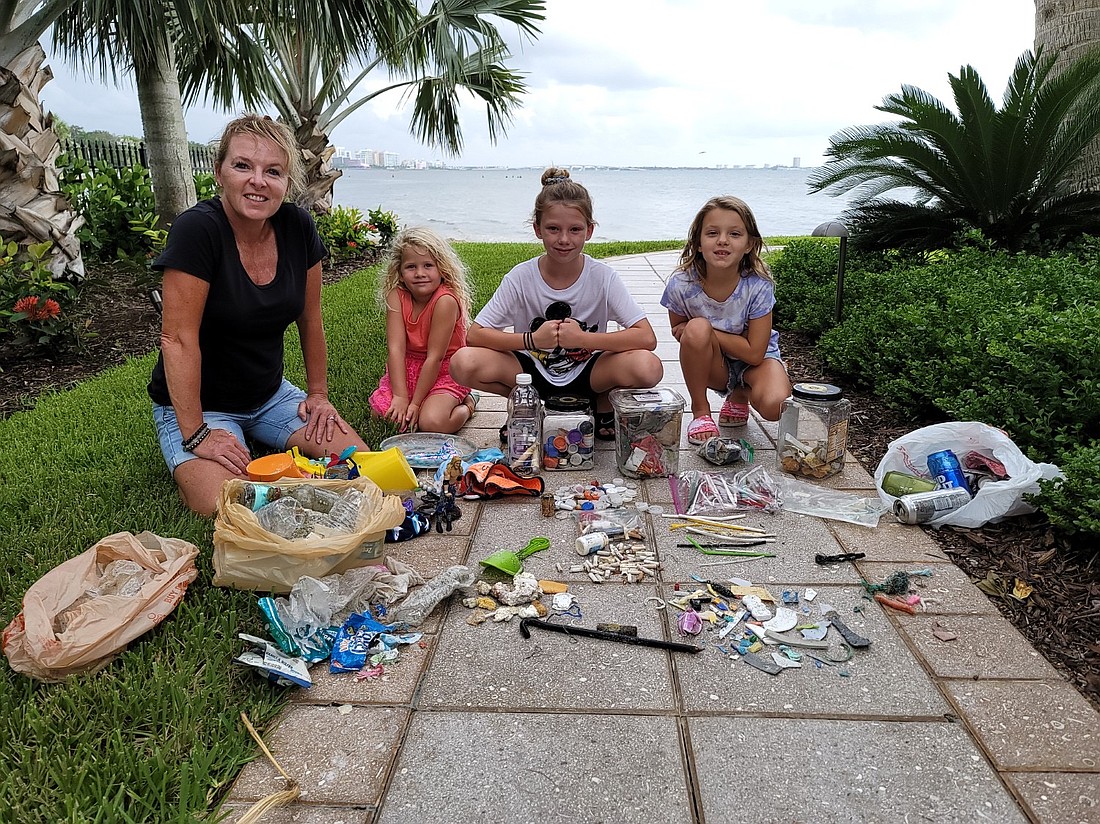- July 26, 2024
-
-
Loading

Loading

In one turtle season, Longboat Key Turtle Watch volunteer Bridgette Clark has collected more than 100 pounds of trash from the beach. To be exact, 1,518 pieces adding up to 111.43 pounds gathered over 37 hours over the summer.
Clark, like all the other turtle watchers, brings a garbage bag on her patrols and adds in a bit of beach cleanup to each turtle walk she does.
“We’re walking the beach anyways, so we might as well be picking up the trash,” Clark said.
Normally, Clark and other volunteers just deposit their collection in a nearby trash can, but at the beginning of this turtle season, Mote Marine Laboratory and Aquarium clued turtle patrollers in on Clean Swell. It’s an app that tracks trash picked up and breaks it down into categories — plastic lids, straws, bags, toys and the like. Clark is the only turtle watcher she knows of who is using the app, so her haul of trash is indicative of only the three to four mile stretch that she walks while patrolling for turtle activity. On one recent day, she logged 41 items.
“We heard the stories of turtles coming in and then dying and then when they do the biopsy they find all these microplastics,” Clark said. “That's the biggest category of stuff I pick up, is all the microplastics, just like the little bits of broken, colored plastic.”
So the trash that shows up most often isn’t the stuff that’s left out on the beach, it’s the broken up, ocean-battered remnants. There’s a lot of trash in the seaweed line, Clark has noticed, where it seems to have washed up with the tide. Beach toys are also a big category, getting left behind after a day on the beach because they’re too cheap to worry about. Some days or weeks, there’s a lot of a specific type of trash — recently it’s been a lot of plastic water bottle lids and cigarette butts, Clark said, unsure why it happens. Even “eco-friendly” cardboard straws are found on the beach.
“They're not breaking down or they are going to take a really long time to break down,” Clark said.
Even though beach access parking on Longboat has been closed for much of the summer, Clark and her fellow volunteers think there’s been about the same amount of trash as in previous years.
“It's just still kind of the same story,” Clark said. “I think maybe because people were quarantining, maybe they were coming out to the beaches more or finding a way to get there. I remember us making the comment of how are the beaches closed and we still have this much garbage.”
Clark lives on the bay, where she also tracks the trash, and notices a different crop of garbage swirling in — styrofoam and cushions, more solid pieces.
“I think the bay gets runoff from town, and then maybe Longboat gets whatever is out in the ocean,” Clark said.
Clark has been sorting all the bits and pieces she’s picked up and keeping them in her garage, where she’ll attempt an art project with her kids and the other remote learning students in their area to make a statement about how many lids, straws and other bits of refuse end up on the sand. Artist Wendell Graham in 2019 built a turtle sculpture from about 1,000 pieces of trash found on the beach
“Since I am separating everything to count it, I really feel like it really makes you see the weight of what's there,” Clark said.